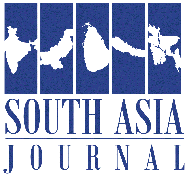
J-10 fighter jets from the Chinese military’s Bayi aerobatic team perform at an air show in Guangdong province on Nov. 12. © Reuters
When Indian and Pakistani militaries clashed in early May, few foresaw China’s rise as the key winner from the four-day conflict.
Hours after the tit-for-tat offensives began, Pakistan’s claim of using its Chinese J-10 C “Vigorous Dragon” fighter planes to successfully target six Indian fighter jets including three French Rafale planes, immediately lifted the share price of the company that manufactures the Chinese aircraft.
While Western officials have conceded the loss of at least one Indian-flown Rafale, they have yet to back Pakistan’s subsequent claim of downing six fighter planes.
But irrespective of the final count, the first ever successful targeting of a French Rafale by a Chinese fighter plane has lifted global interest in China’s expansion of its air power. The J-10 Cs flown by Pakistan were reportedly armed with Chinese PL-15 air-to-air missiles, which are also now at the center of interest from global defense experts.
For the moment, Pakistan remains the only international customer for the J-10 C. But, observers say, May’s Indo-Pakistan clash has lifted the image of the jets — long considered among China’s front-line fighters — and raised the prospect for international sales. Along with the JF-17 “Thunder” fighters that Pakistan co-produces with China, the two platforms together present prospective customers with at least two advantages.
First, the price tag is significantly lower than comparable fighter planes on sale from U.S. or European manufacturers. The second, relates to the continuity of supplies once contracts are signed. This is a lesson Pakistan learnt the hard way from its own experience with the U.S.
In 1990, Washington suspended sales of F-16 fighter planes to Pakistan on the grounds that the country had acquired the capability to produce nuclear weapons. Those sanctions prompted Pakistan to expand its defense cooperation with China by launching a plan to build fighter planes that led to the successful production of the JF-17. The U.S. refusal to sell more F-16s to Pakistan after selling an initial batch of 40 planes in the early 1980s, came after the former Soviet Union withdrew from Afghanistan, ending Pakistan’s status as a U.S.-backed front-line state in the campaign against Moscow’s expansionism.
More recently in the past decade, Pakistan was let down once again by the U.S. on two occasions. First, a contract signed by America to sell advanced military helicopters to Pakistan in 2015 was eventually withdrawn. Then, Washington after 2018 refused to allow Turkey to export a U.S.-manufactured engine that equipped a batch of its advanced military helicopters offered for sale to Pakistan.
Observers have also noted linkages by western suppliers to political conditions and human rights status of importing countries, unlike China which remains ready to sell its hardware to prospective customers irrespective of their internal political situation.
Meanwhile, the capabilities of the J-10 Cs are indicative of Beijing’s success in manufacturing top-of-the-line defense equipment. Observers of China’s development of fighter aircraft manufactured in the 1960s still remember Beijing’s technology back then that lagged Western-manufactured systems.
Pakistan Air Force fighter pilots who flew the F-6, the Chinese equivalent of the MiG-19 manufactured by the former Soviet Union, quickly learnt to be skeptical over its performance. Some nicknamed the F-6 a “flying coffin,” having witnessed terrible accidents such as the pilot seat failing to eject in an emergency, or a sudden drop of air supply for pilots at high altitudes as the fighters endured challenging journeys over the Himalayas enroute to Pakistan from China.
But with China’s economic reforms that began in the late 1970s under the late leader Deng Xiaoping, Beijing vigorously acquired new technologies. The changes in China led to vast improvements in the manufacturing of military equipment that demonstrated a narrowing of the gap with advanced technologies produced by Beijing’s rivals, notably the U.S.
Going forward, Pakistan has reportedly reached an agreement for the purchase of a batch of China’s advanced J-35 A fighter planes, equipping the country with its first-ever fighter with stealth capabilities. Though critics often lament a buildup of arms for the military of the already nuclearized region, others say it is essential for Pakistan to sustain a credible defense in order to maintain peace with its neighbor.
While the world watches South Asia’s tensions with concern, it is China’s defense industry that may emerge as the most unexpected beneficiary of the rising military stakes in the region.
Farhan Bokhari is an Islamabad-based foreign correspondent who writes on Pakistan and the surrounding region.
The article appeared in the asia.nikkei

